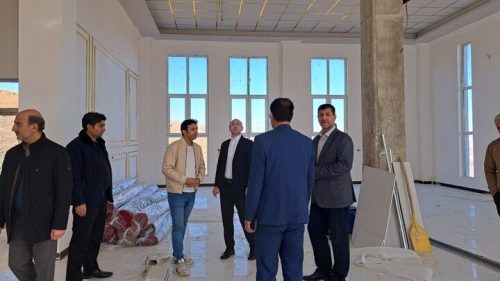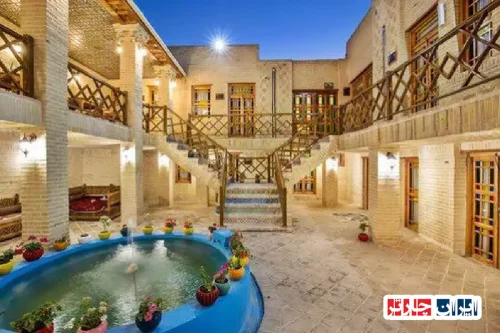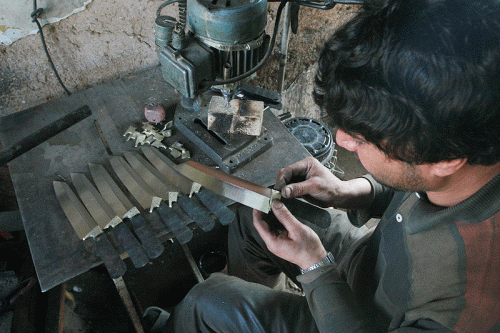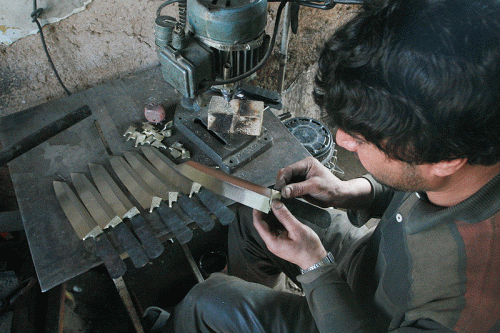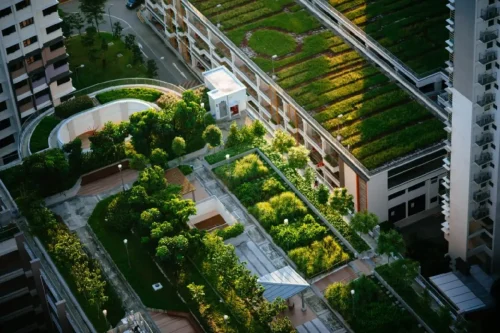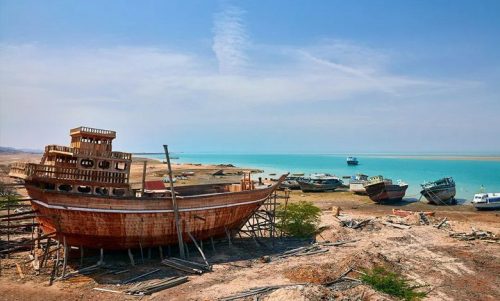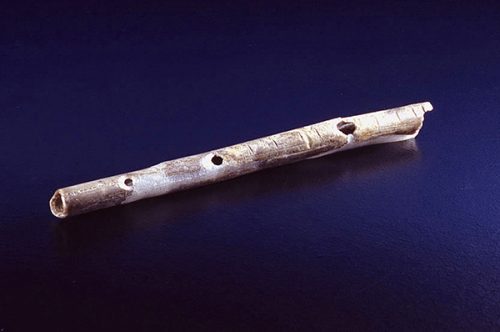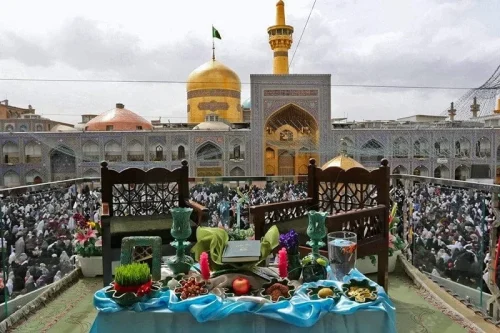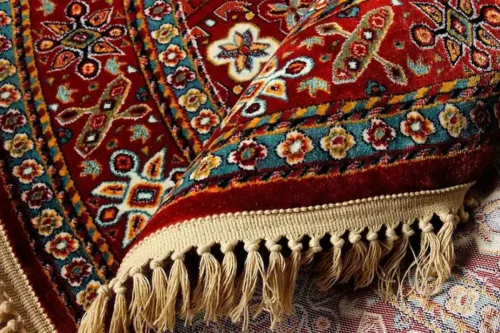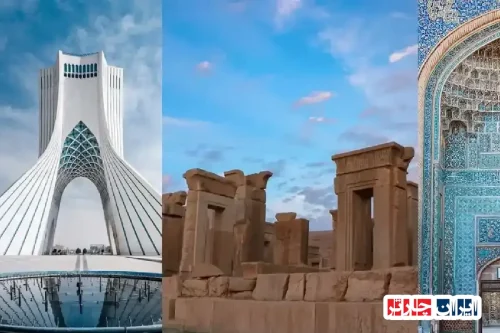News Source : https://www.irna.ir/news/85628640/%D8%AC%D8%A7%DB%8C%DA%AF%D8%A7%D9%87-%D9%82%D8%AF%D8%B3%DB%8C-%D8%AF%D8%B1%D8%AE%D8%AA-%D8%B2%D8%A7%D9%84%D8%B2%D8%A7%D9%84%DA%A9-%D8%AF%D8%B1-%D8%B1%D9%88%D8%B3%D8%AA%D8%A7%DB%8C-%D9%87%D9%86%D8%AF%D9%87-%DA%AF%D9%84%D9%BE%D8%A7%DB%8C%DA%AF%D8%A7%D9%86-%D9%81%DB%8C%D9%84%D9%85
The Sacred Status of the “Hawthorn” Tree in Hende Village, Golpayegan + Video
In Hende village, Golpayegan, the “Hawthorn” tree is recognized as one of the natural and cultural symbols of the area. These trees are known for their fruits, rich in minerals and vitamins, playing a crucial role in maintaining the ecological balance of the village. A cultural heritage researcher from Golpayegan stated that the “Hawthorn” tree has been preserved through local traditions and deep respect from the locals. The trees are not only appreciated for their beauty but also for their medicinal properties. During religious ceremonies such as Tasua and Ashura, dried branches from these trees are offered as vow offerings, reflecting the profound connection of the people with nature and their cultural heritage. Moreover, hawthorn fruits are available to the public, allowing tourists to enjoy them. This situation has led to the “Hawthorn” tree becoming one of the country’s natural heritages, registered on the national natural heritage list.
The Sacred Status of the “Zalzalak” Tree in the Village of Hendeh Golpayegan
In the village of Hendeh Golpayegan, the “Zalzalak” tree is recognized as a symbol of local culture and history. This shrub, with its long-standing presence in the area, has acquired a special status and plays a significant role in preserving the village’s cultural identity. The villagers have passed down through the generations the ways to protect and maintain these shrubs as a part of the living heritage of the community.
Ecological Role of the “Zalzalak” Tree in Hendeh Golpayegan
The sacred status of the “Zalzalak” tree in Hendeh Golpayegan is vital not only culturally but also environmentally. These shrubs are key components of the local ecosystem, helping to enhance air quality, maintain soil moisture, and prevent soil erosion. Additionally, the fruits of the Zalzalak provide a natural food source for insects and birds, enhancing the region’s biodiversity.
Cultural and Religious Uses of the “Zalzalak” Tree in Village Ceremonies
In Hendeh Golpayegan, the sacred status of the “Zalzalak” tree holds special significance during religious ceremonies such as Tasua and Ashura. The dried branches of these trees are used as offerings during mourning rituals, symbolizing the deep connection of the people with nature and their religious beliefs. These traditions reflect the respect and reverence for the area’s natural and cultural heritage.
Medicinal Properties of Zalzalak Fruits and Their Impact on Community Health
Zalzalak fruit possesses numerous medicinal properties that positively impact the health of the Hendeh Golpayegan community. Regular consumption of this fruit can help strengthen the immune system, reduce the risk of heart diseases, and improve digestive health. As a result, Zalzalak fruit has become a significant part of the local diet.
Attracting Tourists to Hendeh Golpayegan through the Sacred Status of the “Zalzalak” Tree
The sacred status of the “Zalzalak” tree in Hendeh Golpayegan has become a natural tourist attraction, drawing many visitors. The beauty and tranquility of these shrubs in a picturesque setting offer a unique experience for tourists. Additionally, activities such as fruit picking and participating in local ceremonies provide unique opportunities to learn about the village’s culture and lifestyle.
Local Economy and the Impact of the Sacred Status of the “Zalzalak” Tree on Village Businesses
The “Zalzalak” tree plays an important role in the local economy of Hendeh Golpayegan. Selling Zalzalak fruits to local markets and related handicrafts has generated significant income for the villagers. Furthermore, the upkeep and protection of these trees create new job opportunities for the youth, thereby contributing to the area’s economic prosperity.
Preservation and Maintenance of Zalzalak Trees by Villagers
The responsibility for protecting the sacred status of the “Zalzalak” tree in Hendeh Golpayegan rests with the local community. Recognizing their cultural and environmental value, the community engages in various programs to care for and maintain the trees. Utilizing traditional and modern methods in natural resource management ensures these shrubs’ survival for future generations.
Biodiversity and the National Heritage Status of the “Zalzalak” Tree
The “Zalzalak” tree holds significant cultural and biodiversity value in the village of Hendeh Golpayegan. By providing a suitable habitat for various insects and birds, these trees help preserve the area’s species diversity. Moreover, the recognition of the natural Zalzalak coverage as a national natural heritage underlines the importance and value of these shrubs.
The Future of the Sacred Status of the “Zalzalak” Tree and Sustainable Development Plans in the Village
For the future sacred status of the “Zalzalak” tree in Hendeh Golpayegan, sustainable development and natural resource protection plans are underway. Given the importance of these trees, various projects aim to expand Zalzalak cultivation, educate villagers on tree care and maintenance, and improve fruit quality. These efforts can support and strengthen the cultural and environmental status of the Zalzalak in the village.
Frequently Asked Questions
- What status does the Zalzalak tree hold in Hendeh village of Golpayegan?
- The Zalzalak trees in Hendeh village are considered sacred cultural and natural heritage, and due to the villagers’ respect, they avoid cutting and damaging them.
- Who plays a key role in preserving the Zalzalak trees in Hendeh village?
- Mohsen Jamali, a cultural heritage researcher from Golpayegan, has played a key role in preserving and highlighting the cultural values of the Zalzalak trees in Hendeh village.
- When was the interview with Mohsen Jamali conducted?
- The interview with Mohsen Jamali was conducted on a Tuesday.
- How do the people of Hendeh treat the Zalzalak trees?
- The villagers have long avoided cutting branches and burning the dried parts of the Zalzalak trees, instead collecting the dry branches to use in mourning ceremonies.
- How are the fruits of the Zalzalak tree used?
- The fruits of the Zalzalak trees are available for public use, and travelers and tourists are allowed to pick and use them.
- What recognition do the Zalzalak trees in Hendeh village have?
- The natural coverage of Zalzalak in Hendeh village is registered as a national natural heritage under number 991 in the national list of natural heritage.
- When was the natural coverage of Zalzalak in Hendeh village registered as a national heritage?
- The natural coverage of Zalzalak in Hendeh village was registered as a national natural heritage on the 11th of Esfand 1400 (solar calendar).
- What are the features of the Zalzalak tree?
- The Zalzalak tree is a small shrub reaching heights of 5 to 14 meters, featuring beautiful, fragrant blossoms in shades of white and pink. Its fruit is rich in minerals and vitamins, offering numerous medicinal properties.
- What diseases can Zalzalak fruit help treat?
- Zalzalak fruit has remarkable properties for treating many diseases, thanks to its richness in minerals and vitamins.
- Where is Hendeh village located in Golpayegan County?
- Hendeh village is the westernmost village in Golpayegan County.
- In which province of Iran is Golpayegan County located?
- Golpayegan County is located in Isfahan Province.
- How far is Golpayegan County from the center of Isfahan Province?
- Golpayegan County is situated to the west of Isfahan City and is 170 kilometers from the provincial center.
- Which law facilitated the registration of Hendeh village’s Zalzalak natural coverage as a national heritage?
- The decree under Article 2, forming the Cultural Heritage, Tourism and Handicrafts Organization in 2003, facilitated the registration of Hendeh village’s Zalzalak as a national heritage.
- How do villagers use the dried branches of Zalzalak?
- Villagers collect the dried branches and only use them during the mourning ceremonies of Tasu’a and Ashura for cooking ceremonial food.
- Where can one view photos related to the Zalzalak’s status in Hendeh village?
- Photos related to the sacred status of the Zalzalak tree in Hendeh village can be found in the article.
- What should one do to view videos related to the article?
- Please refer to the original link to view the video.

